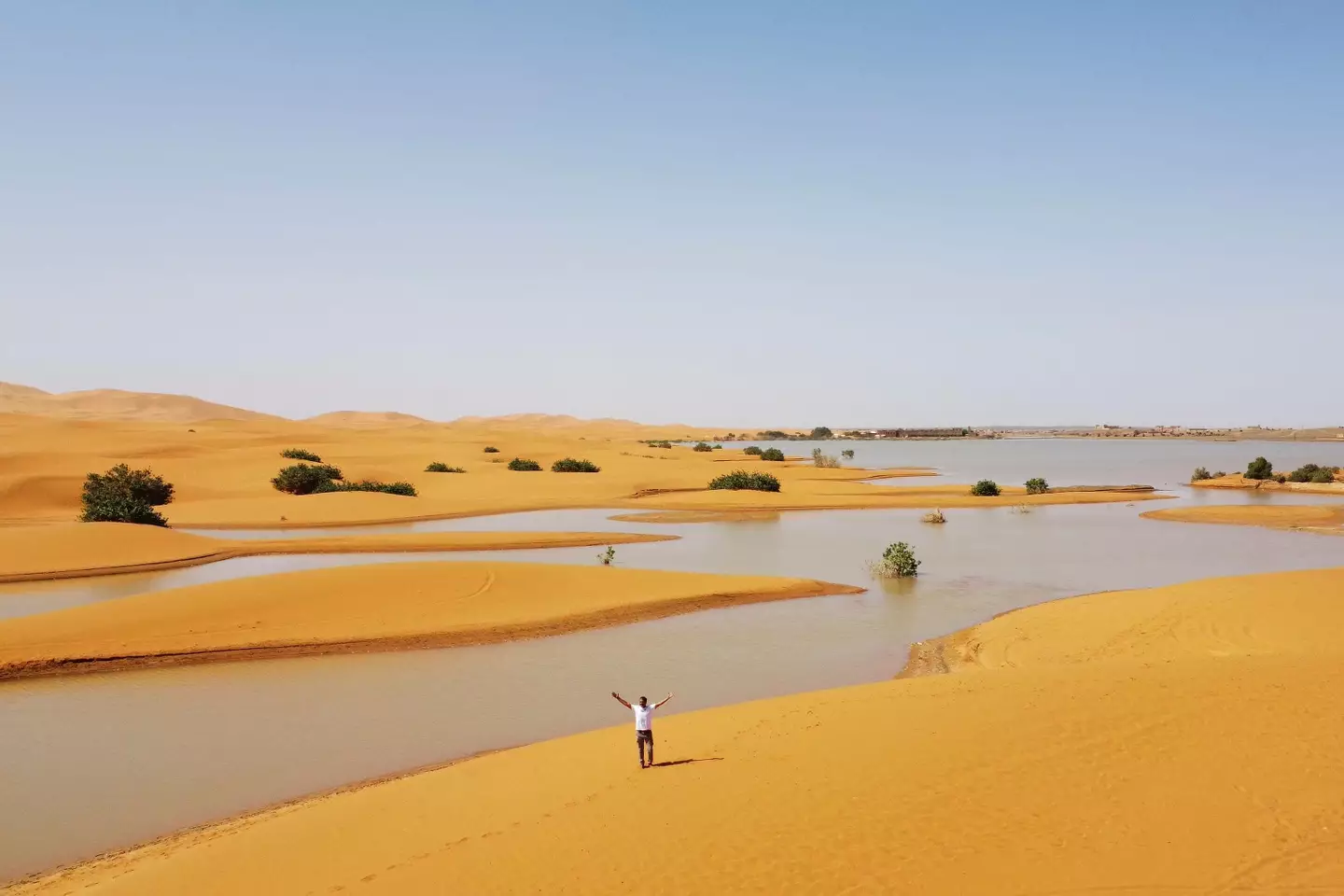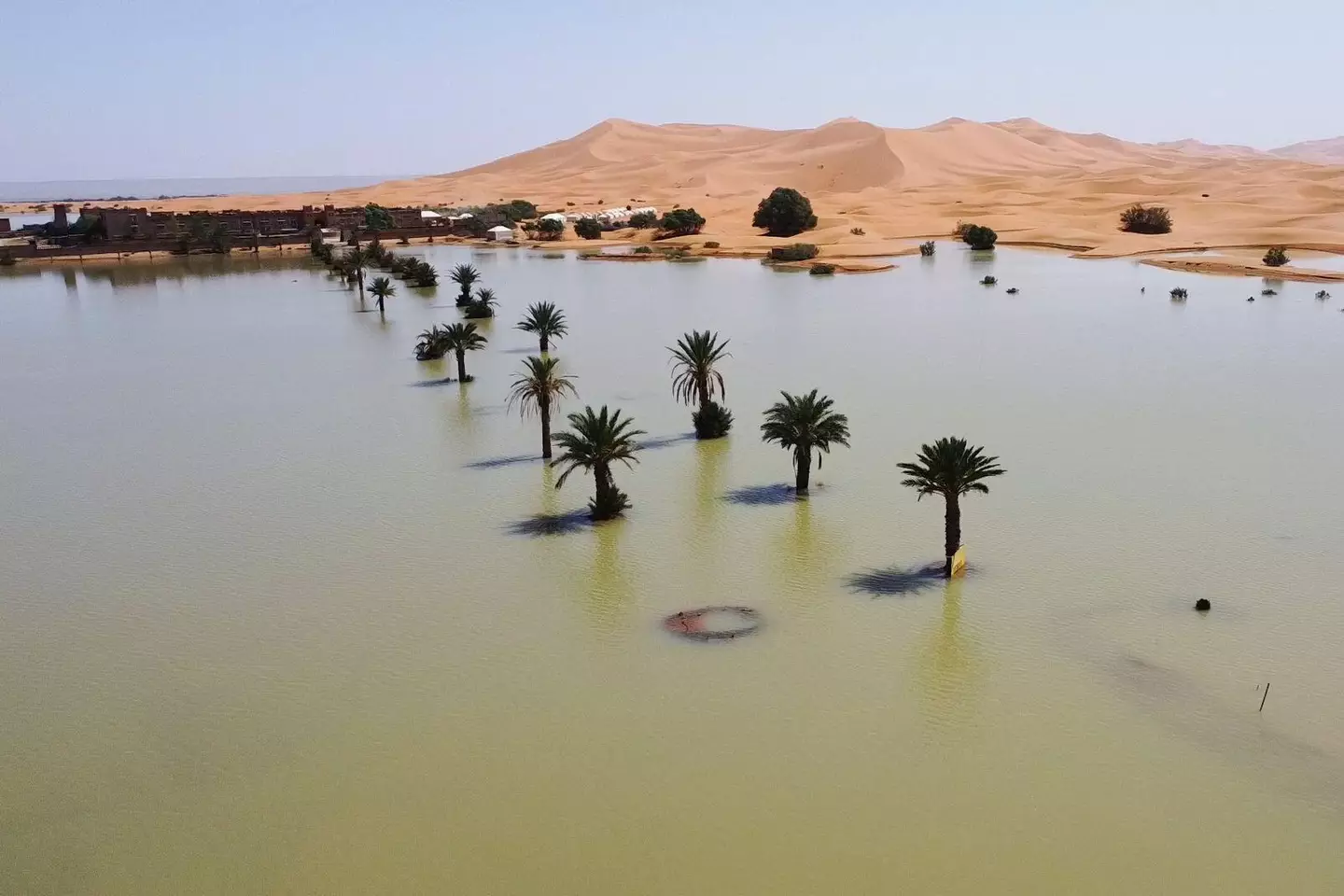Although the Sahara Desert is known for being one of the driest regions on Earth, recent images have captured the unexpected sight of parts of the desert being inundated by heavy rainfall.
This rainfall has resulted in the Sahara experiencing more water than it has in several decades.
In southeast Morocco, areas of the desert are now showing pools of water accumulating between the palm trees.
Data released by the Moroccan government indicates that the rain, which occurred over two days in September, surpassed the yearly averages in several regions.
Typically, these areas receive less than 250 millimeters, or 10 inches, of rain annually.
A particularly affected area was the village of Tagounite, located about 280 miles south of Rabat, the capital.
During just a 24-hour period, Tagounite experienced over 100 millimeters (approximately 3.9 inches) of rain, which is more than a third of their annual average.

Houssine Youabeb of Morocco’s General Directorate of Meteorology mentioned to AP: “It’s been 30 to 50 years since we’ve had this much rain in such a short space of time.”
NASA satellite footage reveals water flowing into the dry bed of Lake Iriqui, situated between Tata and Zagora, which had been arid for five decades.
The images display vehicles navigating the newly formed water bodies in the desert.
Despite the rarity of this weather event, the rainfall could play a crucial role in replenishing groundwater aquifers, which are essential for maintaining the water supply for desert communities.

The region’s dammed reservoirs were also replenished by the rains, though the long-term impact on drought conditions is uncertain.
Tragically, over 20 people have been reported dead in Morocco and Algeria as the floods swept through the sands following the storms.
In Morocco, 18 fatalities were confirmed in rural areas, with 56 homes destroyed due to flooding.
Infrastructure such as drinking water systems, roads, and electricity was also damaged.
The rain affected harvests, prompting the Moroccan government to allocate emergency relief funds.
These floods follow a devastating earthquake last year that resulted in nearly 3,000 deaths and caused destruction in communities located in the High Atlas mountains of central Morocco.

